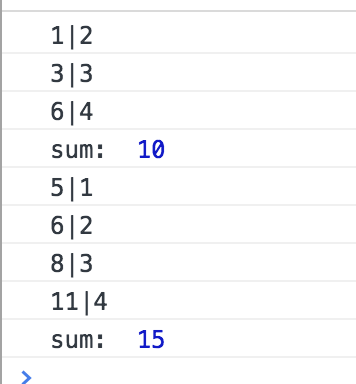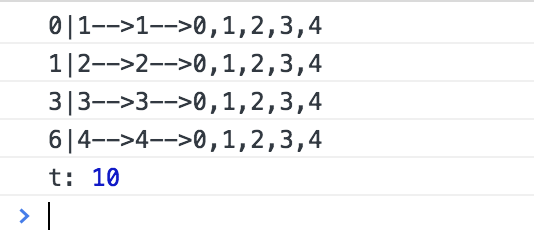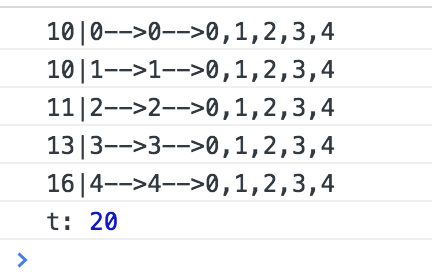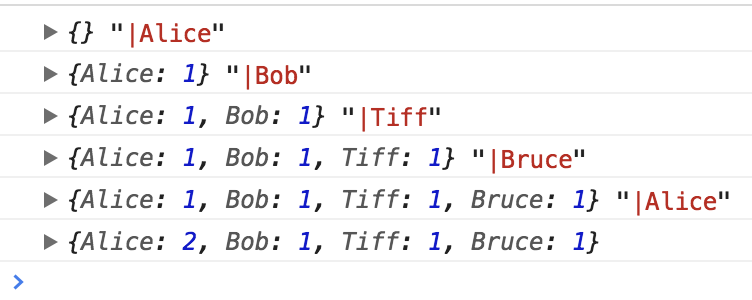reduce函数
reduce() 方法对累加器和数组中的每个元素(从左到右)应用一个函数,将其减少为单个值。
对数组中的所有元素调用指定的回调函数。该回调函数的返回值为累积结果,并且此返回值在下一次调用该回调函数时作为参数提供。
输出如下:

语法:

callback 执行数组中每个值的函数,包含四个参数:
accumulator:累加器累加回调的返回值; 它是上一次调用回调时返回的累积值,或initialValue(如下所示)。currentValue:数组中正在处理的元素。
currentIndex:可选,数组中正在处理的当前元素的索引。 如果提供了initialValue,则索引号为0,否则为索引为1。array:可选,调用reduce的数组。
initialValue:可选,用作第一个调用 callback的第一个参数的值。 如果没有提供初始值,则将使用数组中的第一个元素。 在没有初始值的空数组上调用 reduce 将报错。
用法如下:
1.常见用法:
var t = [0, 1, 2, 3, 4].reduce(function(accumulator, currentValue, currentIndex, array){ console.log(accumulator + '|' + currentValue+ '-->' + currentIndex + '-->' + array); return accumulator + currentValue; }); console.log('t:', t); 输出如下:

2. 如果你提供一个初始值作为reduce方法的第二个参数,以下是运行过程及结果:
var t = [0, 1, 2, 3, 4].reduce((accumulator, currentValue, currentIndex, array) => { console.log(accumulator + '|' + currentValue+ '-->' + currentIndex + '-->' + array); return accumulator + currentValue; }, 10 ); console.log('t:', t); 输出如下:

3.将二维数组转化为一维
var flattened = [[0, 1], [2, 3], [4, 5]].reduce( function(a, b) { return a.concat(b); },[]); console.log(flattened); 输出如下:

4.计算数组中每个元素出现的次数
var names = ['Alice', 'Bob', 'Tiff', 'Bruce', 'Alice']; var countedNames = names.reduce(function (allNames, name) { console.log(allNames, '| ' + name); if (name in allNames) { allNames[name]++; } else { allNames[name] = 1; } return allNames; }, {}); console.log(countedNames); 输出如下:

5.数组去重
let arr = [1,2,1,2,3,5,4,5,3,4,4,4,4]; let result = arr.sort().reduce((init, current)=>{ if(init.length===0 || init[init.length-1]!==current){ init.push(current); } /* 注意:使用push的话,必须return 这个变量init,如果return init.push()的话会报错; 使用concat不存在这个问题,可以直接return a.concat(b);
*/
return init; }, []); console.log(result); //[1,2,3,4,5]
输出如下:
